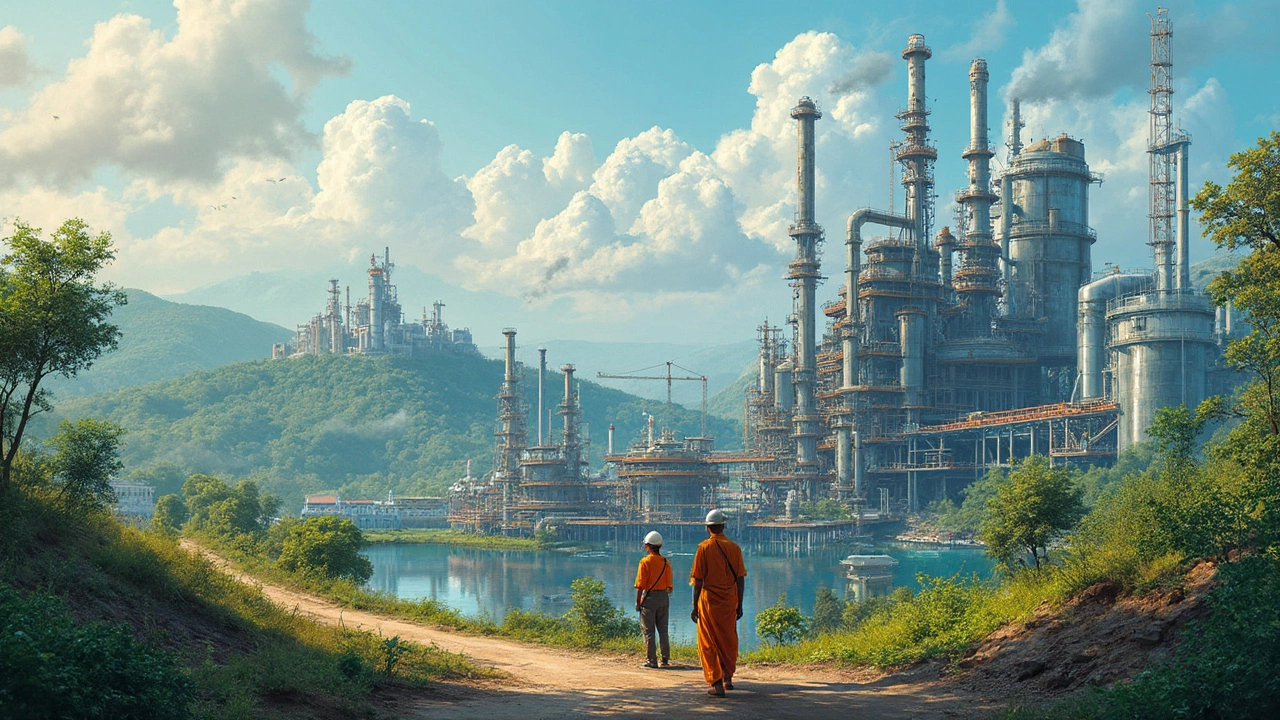Indian Chemicals – The Backbone of India’s Manufacturing
When you think about India’s factories, you probably picture cars, textiles or gadgets. But the real workhorse behind most of those products is the chemicals sector. From the solvents that keep paint smooth to the active ingredients that power medicines, chemicals are everywhere. In 2023 the industry crossed the $90 billion mark and accounts for roughly 7% of India’s total manufacturing output.
Why India Is a Chemical Powerhouse
Two things give India a leg up: raw material availability and cost‑effective labour. The country sits on huge reserves of natural gas, coal and minerals that feed basic chemicals like methanol and soda ash. At the same time, a skilled but affordable workforce keeps production costs lower than China or Europe. That combo attracts global pharma giants looking for API (active pharmaceutical ingredient) supply and multinational firms setting up specialty polymer plants.
Another boost comes from government policies. The “Make in India” push includes tax breaks for chemical parks, fast‑track clearances for green chemistry projects, and incentives for exporting specialty chemicals. As a result, India now ranks among the top five exporters of organic intermediates and bulk chemicals.
Opportunities and Challenges in 2024‑2025
Demand for specialty chemicals – think high‑performance polymers, agro‑chemicals and pharma intermediates – is sprinting ahead. Domestic pharma manufacturing, highlighted in posts about generics and vaccine production, needs a reliable supply of high‑purity chemicals. If you’re a supplier, focusing on consistent quality and traceability can land you big contracts.
But there are hurdles. Environmental regulations are tightening, especially around hazardous waste and emissions. Companies that ignore the shift to greener processes risk fines and losing market share. Investing in water‑recycling, waste‑to‑energy, and low‑carbon catalysts isn’t just compliance; it’s becoming a selling point for eco‑aware buyers.
Logistics also matter. Getting chemicals from inland parks to ports can be slow due to congested rail lines. Smart warehousing and partnerships with logistics firms can shave days off delivery times, which matters when you’re handling time‑sensitive pharma ingredients.
Finally, talent is a growing concern. While the labour pool is cheap, there’s a shortage of experts in process optimization and digital twins. Upskilling programs and collaborations with engineering colleges can fill that gap and keep plants running at peak efficiency.
Bottom line: India’s chemicals sector is the quiet engine driving everything from cars to Covid‑19 vaccines. If you’re a buyer, supplier, or investor, look for players that combine low cost with clean, reliable processes. Those are the companies that will lead the market in 2025 and beyond.

India's Rank in Global Chemical Production: A Deep Dive
India has emerged as a significant player in the global chemical industry, ranking among the top producers worldwide. With a focus on innovation and sustainability, the Indian chemical sector continues to grow rapidly. Understanding India's ranking helps showcase its strengths and opportunities in global markets. From petrochemicals to specialty chemicals, the industry is diverse and expansive. Learn about India's position in chemical production and what it means for the future.
